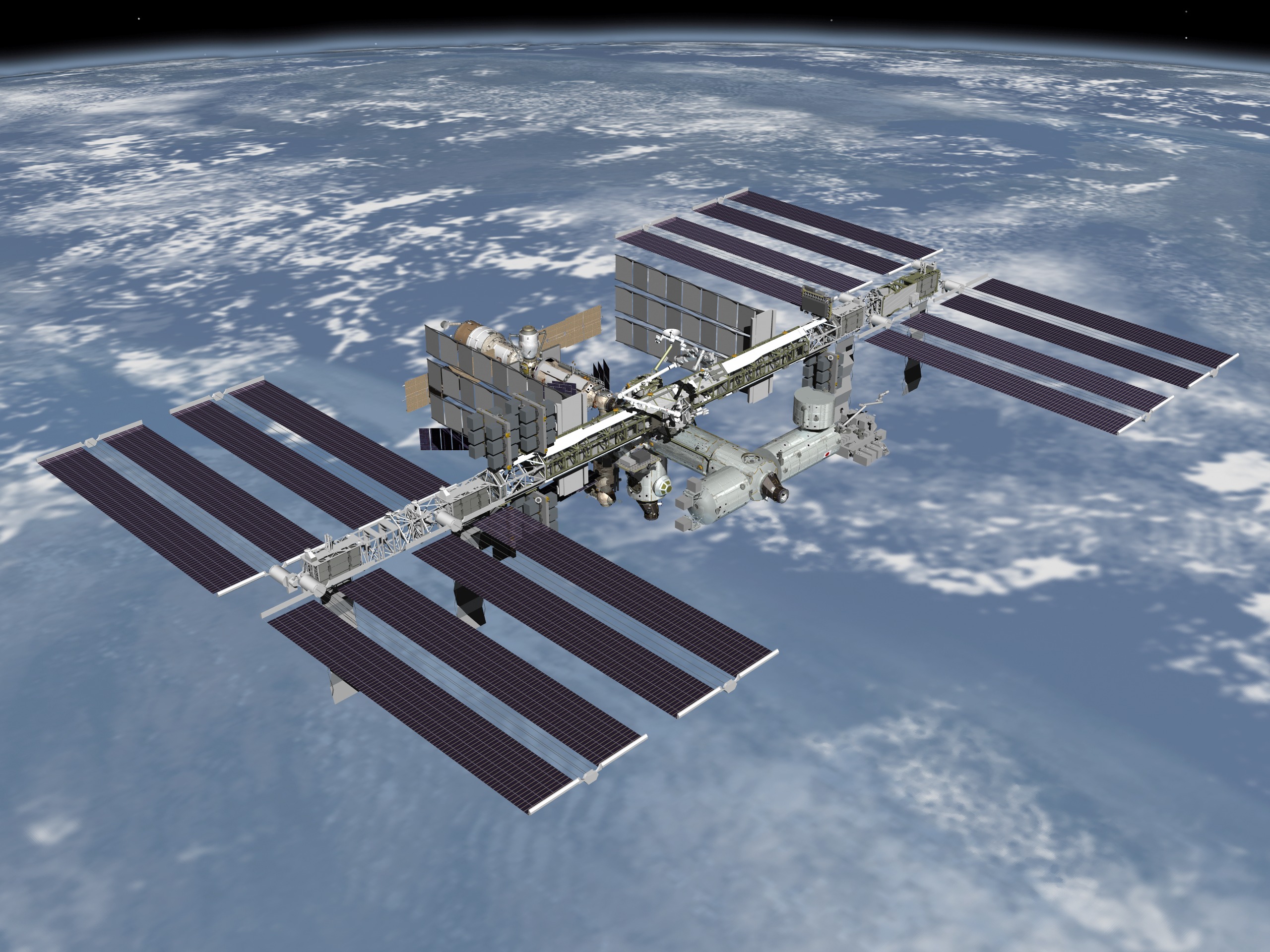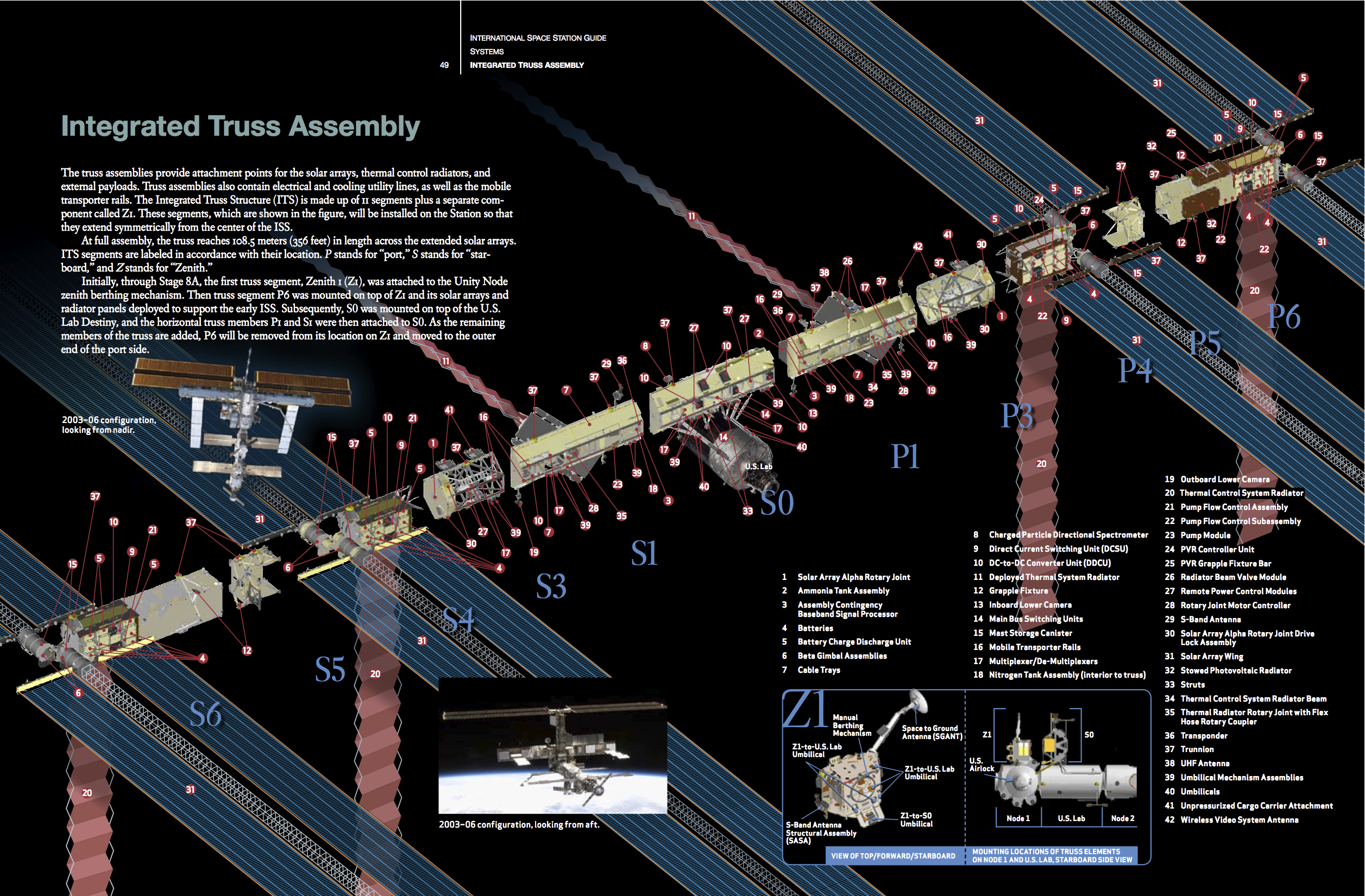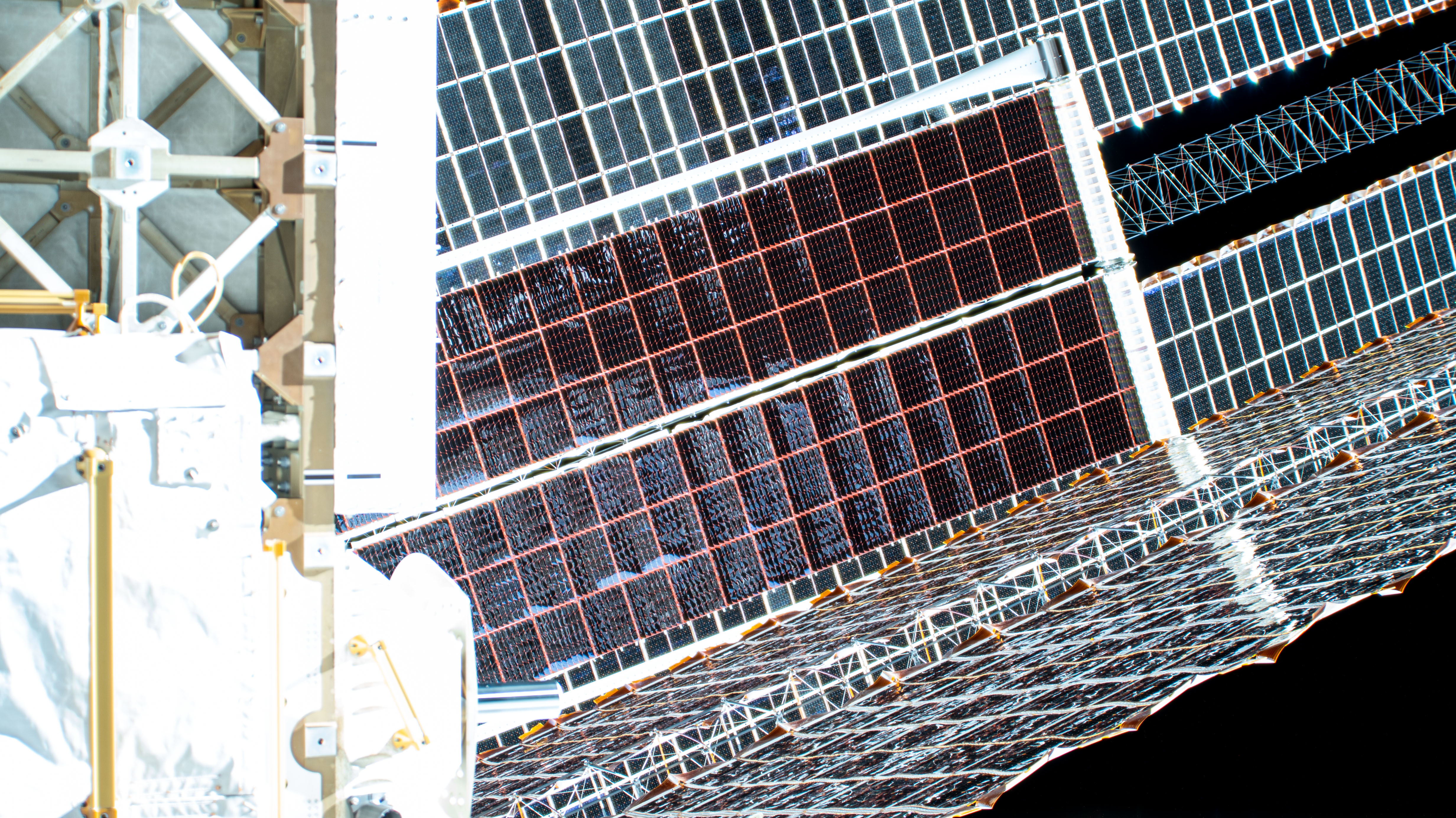|
Kounotori 8
, also known as HTV-8 was the 8th flight of the H-II Transfer Vehicle, a robotic cargo spacecraft to resupply the International Space Station. It was launched on 24 September 2019, 16:05:05 UTC. Spacecraft Major changes from previous Kounotori are: * Replacement of Earth sensor with star tracker for spacecraft attitude control * New cargo racks developed for HTV-X which allows 30% more Cargo Transfer Bags (CTB) to be carried in the Pressurized Logistics Carrier (PLC). (316 CTBs for Kounotori 8, compared to 248 CTBs of Kounotori 6) Cargo Kounotori 8 carries about 5300 kg of cargo, consisting of 3400 kg in the pressurized compartment and 1900 kg in the unpressurized compartment. Cargo in the Pressurized Logistics Carrier (PLC) include: * JAXA experiment Cell Biology Experiment Facility-Left (CBEF-L) * JAXA experiment Sony Optical Link for ISS (SOLISS), a satellite optical communication demonstration co-developed with * JAXA experiment Hourglass, which will ... [...More Info...] [...Related Items...] OR: [Wikipedia] [Google] [Baidu] |
International Space Station
The International Space Station (ISS) is the largest modular space station currently in low Earth orbit. It is a multinational collaborative project involving five participating space agencies: NASA (United States), Roscosmos (Russia), JAXA (Japan), ESA (Europe), and CSA (Canada). The ownership and use of the space station is established by intergovernmental treaties and agreements. The station serves as a microgravity and space environment research laboratory in which scientific research is conducted in astrobiology, astronomy, meteorology, physics, and other fields. The ISS is suited for testing the spacecraft systems and equipment required for possible future long-duration missions to the Moon and Mars. The ISS programme evolved from the Space Station ''Freedom'', a 1984 American proposal to construct a permanently crewed Earth-orbiting station, and the contemporaneous Soviet/Russian '' Mir-2'' proposal from 1976 with similar aims. The ISS is the ninth space station to ... [...More Info...] [...Related Items...] OR: [Wikipedia] [Google] [Baidu] |
Atmospheric Entry
Atmospheric entry is the movement of an object from outer space into and through the gases of an atmosphere of a planet, dwarf planet, or natural satellite. There are two main types of atmospheric entry: ''uncontrolled entry'', such as the entry of astronomical objects, space debris, or bolides; and ''controlled entry'' (or ''reentry'') of a spacecraft capable of being navigated or following a predetermined course. Technologies and procedures allowing the controlled atmospheric ''entry, descent, and landing'' of spacecraft are collectively termed as ''EDL''. Objects entering an atmosphere experience atmospheric drag, which puts mechanical stress on the object, and aerodynamic heating—caused mostly by compression of the air in front of the object, but also by drag. These forces can cause loss of mass (ablation) or even complete disintegration of smaller objects, and objects with lower compressive strength can explode. Crewed space vehicles must be slowed to subsonic speed ... [...More Info...] [...Related Items...] OR: [Wikipedia] [Google] [Baidu] |
Soyuz MS-10
Soyuz MS-10 was a crewed Soyuz MS spaceflight that aborted shortly after launch on 11 October 2018 due to a failure of the Soyuz-FG launch vehicle boosters. MS-10 was the 139th flight of a Soyuz spacecraft. It was intended to transport two members of the Expedition 57 crew to the International Space Station. A few minutes after liftoff, the craft went into contingency abort due to a booster failure and had to return to Earth. By the time the contingency abort was declared, the launch escape system (LES) tower had already been ejected and the capsule was pulled away from the rocket using the solid rocket jettison motors on the capsule fairing. Both crew members, Roscosmos cosmonaut Aleksey Ovchinin and NASA astronaut Nick Hague, were recovered in good health. The MS-10 flight abort was the first instance of a Russian crewed booster accident in 35 years, since Soyuz T-10-1 exploded on the launch pad in September 1983. On 1 November 2018, Russian scientists released a video reco ... [...More Info...] [...Related Items...] OR: [Wikipedia] [Google] [Baidu] |
List Of International Space Station Spacewalks
On the International Space Station (ISS), extravehicular activities are major events in the building and maintaining of the orbital laboratory, and are performed to install new components, re-wire systems, modules, and equipment, and to monitor, install, and retrieve scientific experiments. Due to the complexity of building a station in space, space agencies train astronauts extensively, preparing them to encounter surprises during spacewalks, teaching them how to assemble special tools and equipment, and carefully coordinating every activity during spacewalks. From 1998 to 2005, thirty-seven Space Shuttle missions were scheduled to assemble, outfit and begin experiments and research aboard the station. The initial spacewalk to begin the assembly of the International Space Station was held on 7 December 1998, following the launch of the first section of the station, '' Zarya'', from Baikonur Cosmodrome, Kazakhstan, on 20 November 1998. The spacewalk attached the U.S.-bui ... [...More Info...] [...Related Items...] OR: [Wikipedia] [Google] [Baidu] |
Orbital Replacement Unit
Orbital replacement units (or on-orbit replaceable unit) (ORUs) are key elements of the International Space Station that can be readily replaced when the unit either passes its design life or fails. ORUs are parts of the main systems and subsystems of the external elements of the ISS, none are intended to be installed inside the pressurised modules. Examples of ORUs are: pumps, storage tanks, controller boxes, antennas, and battery units. Such units are replaced either by astronauts during EVA or by the Dextre (SPDM) robotic arm. All are stored on the three external stowage platforms (ESPs) or the four ExPRESS Logistics Carriers (ELCs) mounted on the Integrated Truss Structure (ITS). Introduction While spare parts/ORUs were routinely brought up and down during the ISS life-time via Space Shuttle resupply missions, there was a heavy emphasis once the Station was considered complete. Several Shuttle missions were dedicated to the delivery of ORUs using support carrier structures/p ... [...More Info...] [...Related Items...] OR: [Wikipedia] [Google] [Baidu] |
Lithium-ion Battery
A lithium-ion or Li-ion battery is a type of rechargeable battery which uses the reversible reduction of lithium ions to store energy. It is the predominant battery type used in portable consumer electronics and electric vehicles. It also sees significant use for grid-scale energy storage and military and aerospace applications. Compared to other rechargeable battery technologies, Li-ion batteries have high energy densities, low self-discharge, and no memory effect (although a small memory effect reported in LFP cells has been traced to poorly made cells). Chemistry, performance, cost and safety characteristics vary across types of lithium-ion batteries. Most commercial Li-ion cells use intercalation compounds as the active materials. The anode or negative electrode is usually graphite, although silicon-carbon is also being increasingly used. Cells can be manufactured to prioritize either energy or power density. Handheld electronics mostly use lithium polymer batteries ... [...More Info...] [...Related Items...] OR: [Wikipedia] [Google] [Baidu] |
Common Berthing Mechanism
The Common Mechanism (CBM) connects habitable elements in the US Orbital Segment (USOS) of the International Space Station (ISS). The CBM has two distinct sides that, once mated, form a cylindrical vestibule between modules. The vestibule is about long and across. At least one end of the vestibule is often limited in diameter by a smaller bulkhead penetration. The elements are maneuvered to the berthing-ready position by a . Latches and bolts on the Active CBM (ACBM) side pull fittings and floating nuts on the Passive CBM (PCBM) side to align and join the two. After the vestibule is pressurized, crew members clear a passage between modules by removing some CBM components. Utility connectors are installed between facing bulkheads, with a closeout panel to cover them. The resulting tunnel can be used as a loading bay, admitting large payloads from visiting cargo spacecraft that would not fit through a typical personnel passageway. Design overview All CBM types featur ... [...More Info...] [...Related Items...] OR: [Wikipedia] [Google] [Baidu] |
Space Station Remote Manipulator System
The Mobile Servicing System (MSS), is a robotic system on board the International Space Station (ISS). Launched to the ISS in 2001, it plays a key role in station assembly and maintenance; it moves equipment and supplies around the station, supports astronauts working in space, and services instruments and other payloads attached to the ISS and is used for external maintenance. Astronauts receive specialized training to enable them to perform these functions with the various systems of the MSS. The MSS is composed of three components: * the Space Station Remote Manipulator System (SSRMS), known as Canadarm2. * the Mobile Remote Servicer Base System (MBS). * the Special Purpose Dexterous Manipulator (SPDM, also known as "Dextre" or "Canada hand"). The system can move along rails on the Integrated Truss Structure on top of the US provided Mobile Transporter cart which hosts the MRS Base System. The system's control software was written in the Ada 95 programming language. The M ... [...More Info...] [...Related Items...] OR: [Wikipedia] [Google] [Baidu] |
Soyuz MS-15
Soyuz MS-15 was a Soyuz spaceflight launched on 25 September 2019, transporting two members of the Expedition 61 crew and a short duration visiting crew member to the International Space Station. Soyuz MS-15 was the 143rd flight of a Soyuz spacecraft with a crew. It was the last flight of Soyuz-FG launcher before its replacement by the Soyuz-2 in the crewed spaceflight role, and also the last launch from Site 1/5 (Gagarin's Start) before its modernisation to support the new Soyuz-2 rocket. The crew consisted of a Russian commander, an American flight engineer, and the first Emirati astronaut. To celebrate this event, pictures of the Soyuz launcher and of Hazza Al Mansouri were projected on Burj Khalifa The Burj Khalifa (; ar, برج خليفة, , Khalifa Tower), known as the Burj Dubai prior to its inauguration in 2010, is a skyscraper in Dubai, United Arab Emirates. It is known for being the world’s tallest building. With a total height ..., the tallest building in the ... [...More Info...] [...Related Items...] OR: [Wikipedia] [Google] [Baidu] |
Collision Avoidance (spacecraft)
Spacecraft collision avoidance is the implementation and study of processes minimizing the chance of orbiting spacecraft inadvertently colliding with other orbiting objects. The most common subject of spacecraft collision avoidance research and development is for human-made satellites in geocentric orbits. The subject includes procedures designed to prevent the accumulation of space debris in orbit, analytical methods for predicting likely collisions, and avoidance procedures to maneuver offending spacecraft away from danger. Orbital speed around large bodies (like the Earth) is fast, resulting in significant kinetic energy being involved in on-orbit collisions. For example, at the Low Earth orbital velocity of ~7.8 km/s, two perpendicularly colliding spacecraft would meet at ~12.2 km/s. Almost no known structurally solid materials can withstand such an energetic impact. Most of the satellite would be instantly vaporized by the collision and broken up into myriad pieces ejected at ... [...More Info...] [...Related Items...] OR: [Wikipedia] [Google] [Baidu] |
Electrical System Of The International Space Station
The electrical system of the International Space Station is a critical resource for the International Space Station (ISS) because it allows the crew to live comfortably, to safely operate the station, and to perform scientific experiments. The ISS electrical system uses solar cells to directly convert sunlight to electricity. Large numbers of cells are assembled in arrays to produce high power levels. This method of harnessing solar power is called photovoltaics. The process of collecting sunlight, converting it to electricity, and managing and distributing this electricity builds up excess heat that can damage spacecraft equipment. This heat must be eliminated for reliable operation of the space station in orbit. The ISS power system uses radiators to dissipate the heat away from the spacecraft. The radiators are shaded from sunlight and aligned toward the cold void of deep space. Solar array wing Each ISS solar array wing (often abbreviated "SAW") consists of two re ... [...More Info...] [...Related Items...] OR: [Wikipedia] [Google] [Baidu] |

.jpg)




